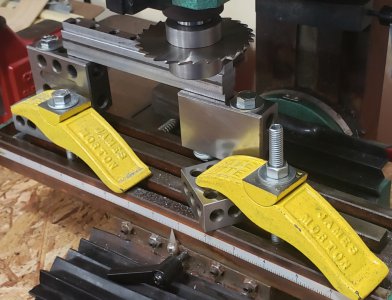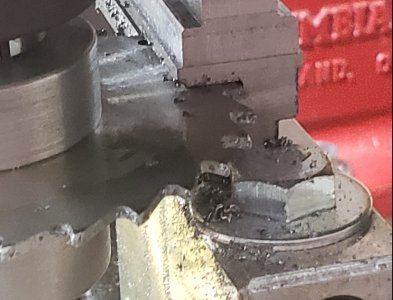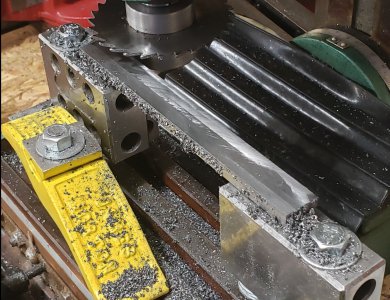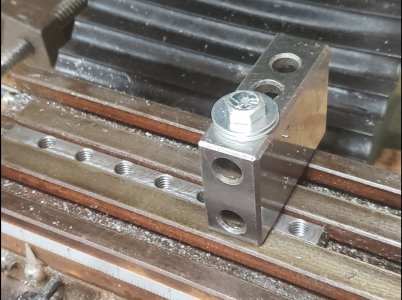- Joined
- Mar 3, 2020
- Messages
- 195
As you may notice in one of the pictures, my current hold down capabilities consist of 3/8" carriage bolts with flats filed into the flanges.  I am turning this bar of "unknownium" alloy (something 1.5" x 0.75" with slight scale) into 14 T-Nuts for the mini-mill.
I am turning this bar of "unknownium" alloy (something 1.5" x 0.75" with slight scale) into 14 T-Nuts for the mini-mill.
The mill I stumbled into because it was cheap at an auction... I'm starting to learn how to use it to it's strengths and for small, non-precision work it seems to get the job done.
Most of the metal removal here was with a 5/16" 4-Flute short Carbide End mill (HTC). At one point I tried a 3/4" HSS cutter, but need to learn more technique with it... with the 5/16" carbide tool, cuts were about 1/4" deep and 0.040" depth of cut.
The slight chamfer on the long edges is the result of slightly engaging a ball-nose endmill. I need to acquire a 45* cutter (other than a countersink which I have)
The holes are tapped 3/8-16, and are not through holes. I blind-drilled 7/16" of the part's 1/2" depth with an end mill (conveniently 5/16 tap drill size for 3/8-16 threads!). Because of the short depth only the bottoming tap really did anything, but a new USA tap cut like butter. The remaining operation is to slit the two halves of bar apart and then separate the 7 nuts per half. ...and then cold blue them.
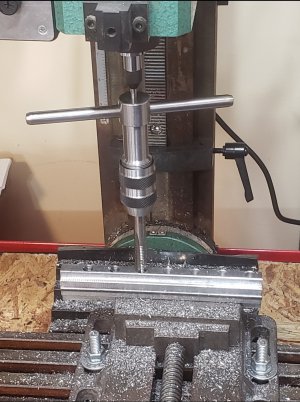
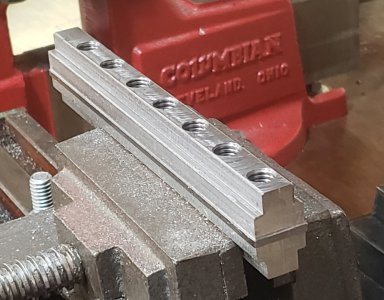
The mill I stumbled into because it was cheap at an auction... I'm starting to learn how to use it to it's strengths and for small, non-precision work it seems to get the job done.
Most of the metal removal here was with a 5/16" 4-Flute short Carbide End mill (HTC). At one point I tried a 3/4" HSS cutter, but need to learn more technique with it... with the 5/16" carbide tool, cuts were about 1/4" deep and 0.040" depth of cut.
The slight chamfer on the long edges is the result of slightly engaging a ball-nose endmill. I need to acquire a 45* cutter (other than a countersink which I have)
The holes are tapped 3/8-16, and are not through holes. I blind-drilled 7/16" of the part's 1/2" depth with an end mill (conveniently 5/16 tap drill size for 3/8-16 threads!). Because of the short depth only the bottoming tap really did anything, but a new USA tap cut like butter. The remaining operation is to slit the two halves of bar apart and then separate the 7 nuts per half. ...and then cold blue them.


Last edited:


